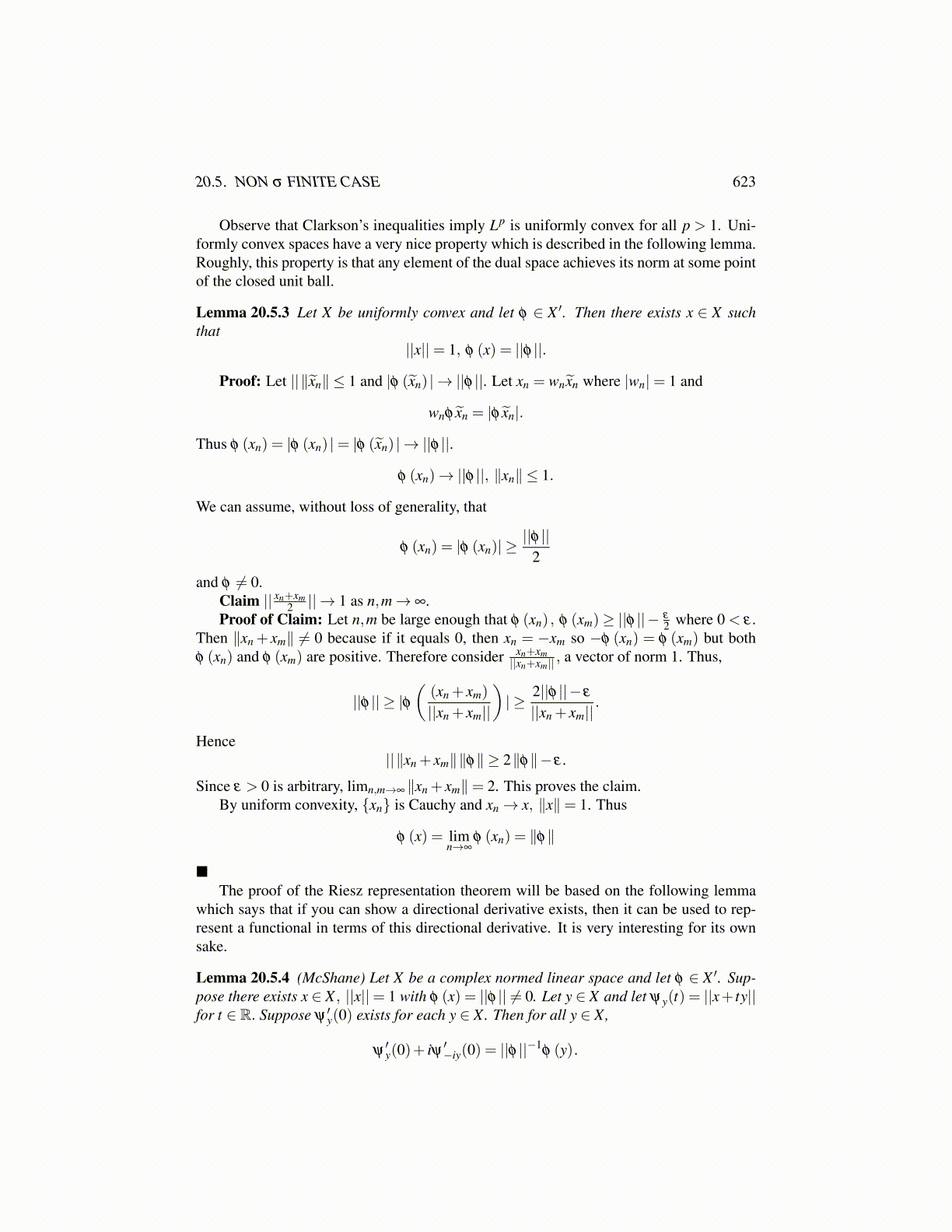
20.5. NON σ FINITE CASE 623
Observe that Clarkson’s inequalities imply Lp is uniformly convex for all p > 1. Uni-formly convex spaces have a very nice property which is described in the following lemma.Roughly, this property is that any element of the dual space achieves its norm at some pointof the closed unit ball.
Lemma 20.5.3 Let X be uniformly convex and let φ ∈ X ′. Then there exists x ∈ X suchthat
||x||= 1, φ (x) = ||φ ||.
Proof: Let ||∥x̃n∥ ≤ 1 and |φ (x̃n) | → ||φ ||. Let xn = wnx̃n where |wn|= 1 and
wnφ x̃n = |φ x̃n|.
Thus φ (xn) = |φ (xn) |= |φ (x̃n) | → ||φ ||.
φ (xn)→ ||φ ||, ∥xn∥ ≤ 1.
We can assume, without loss of generality, that
φ (xn) = |φ (xn)| ≥||φ ||
2
and φ ̸= 0.Claim || xn+xm
2 || → 1 as n,m→ ∞.Proof of Claim: Let n,m be large enough that φ (xn) , φ (xm)≥ ||φ ||− ε
2 where 0 < ε .Then ∥xn + xm∥ ̸= 0 because if it equals 0, then xn = −xm so −φ (xn) = φ (xm) but bothφ (xn) and φ (xm) are positive. Therefore consider xn+xm
||xn+xm|| , a vector of norm 1. Thus,
||φ || ≥ |φ(
(xn + xm)
||xn + xm||
)| ≥ 2||φ ||− ε
||xn + xm||.
Hence||∥xn + xm∥∥φ∥ ≥ 2∥φ∥− ε .
Since ε > 0 is arbitrary, limn,m→∞ ∥xn + xm∥= 2. This proves the claim.By uniform convexity, {xn} is Cauchy and xn→ x, ∥x∥= 1. Thus
φ (x) = limn→∞
φ (xn) = ∥φ∥
The proof of the Riesz representation theorem will be based on the following lemmawhich says that if you can show a directional derivative exists, then it can be used to rep-resent a functional in terms of this directional derivative. It is very interesting for its ownsake.
Lemma 20.5.4 (McShane) Let X be a complex normed linear space and let φ ∈ X ′. Sup-pose there exists x ∈ X , ||x||= 1 with φ (x) = ||φ || ̸= 0. Let y ∈ X and let ψy(t) = ||x+ ty||for t ∈ R. Suppose ψ ′y(0) exists for each y ∈ X. Then for all y ∈ X,
ψ′y(0)+ iψ ′−iy(0) = ||φ ||−1
φ (y) .